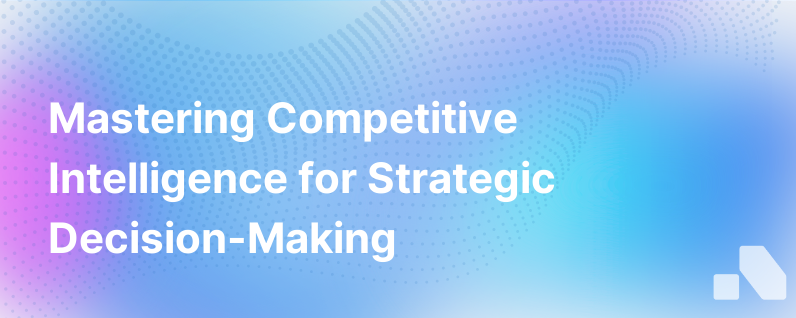
Are you leveraging Competitive Intelligence (CI) to guide your decisions and strategies? Using competitive intelligence can help you stay ahead of your industry competition, identify new markets, and predict consumer trends before they even materialize. It's a priceless tool to adapt to changes and challenges, helping you take proactive measures rather than simply reacting.
CI as a process involves defining who your competition is, gathering information, analyzing the data obtained, and then setting strategic plans based on the insights derived. This article will guide you on how to set up a competitive intelligence process that helps your business gain a competitive edge in the market.
What is Competitive Intelligence?
CI is the collection, analysis, and interpretation of market data about competitors, relevant events, and industry trends. This information, when properly leveraged, can give an organization a significant competitive advantage in the marketplace. It provides actionable insights that can influence your business strategy, product development, marketing, and sales.
Competitive Intelligence: Getting Started
There are four major steps to develop a functional CI process.
-
Defining your competitor-set: Identifying your competition properly is the first critical step to a successful CI process. To do this, look beyond your direct competition to businesses that serve a similar demographic as yours. Look out for possible players who may enter the market soon, especially ones that have a unique selling proposition different from that of your own.
-
Data collection: Once your competitor set is defined, the gathering of data can begin. Data sources can be varied – from the competitor’s website, trade magazines, social media, and industry studies to forums and business listings. Understand what customers are saying, monitor changes in products, offers, personnel, and market trends.
-
Data Analysis: The mass of data gathered has to be analyzed to provide clear, actionable insights. The idea is to view the collected data from a strategic point of view, identifying patterns, trends, strengths and weaknesses. A SWOT analysis, for instance, can be beneficial at this point.
-
Implementing competitive actions: Once you generate meaningful insights, it’s time to make use of them strategically. Draw on your intelligence findings to develop strategies and actions that address competition, usually for sales, marketing, and product development. Make sure to constantly monitor these activities' results and adjust accordingly.
How Technology Can Aid in CI
The process of competitor analysis can often seem daunting, but AI platforms, like Aomni, significantly streamline the process and allow you to focus on making strategic decisions rather than data collection and analysis.
Aomni, for instance, provides real-time competitive insights. It does the heavy lifting of data collection, filtration, and analysis, delivering a concise report with key data to your sales team in a matter of minutes. The dynamic nature of Aomni's AI platform enables you to keep your CI process up-to-date, taking into account the constantly changing business landscape.
Key Aspects to Include in Your Competitive Intelligence Process
To make the most of your CI process:
- Align your intelligence process with your company's strategy: CI should be aligned with your business strategy; it must note and bring to light things that directly contribute to or influence your strategic objectives.
- Keep your intelligence process iterative and flexible: Changes in the market are inevitable. You need to be open to revising or expanding your competitor set or your data sources.
- Integrate intelligence throughout your organization: CI should not be restricted to the strategy team. Information gathered should be disseminated across all relevant teams and departments as required.
- Stay ethical: It's easy to cross the line from intelligent data collection into unscrupulous territory. Make sure that your CI practices adhere to ethical guidelines and laws concerning data collection and dissemination.
Conclusion
As much as you might like to focus purely on your internal strategies and strengths, recognizing and outsmarting your competition is vital for business success. On its own, competitive intelligence isn't the answer to beating competition. Instead, it's the tool that provides critical market insights, helping you make educated choices and develop strategies that sink your competition. With AI tools like Aomni, the process gets easier and more accurate, keeping you ready and robust in this volatile business environment.